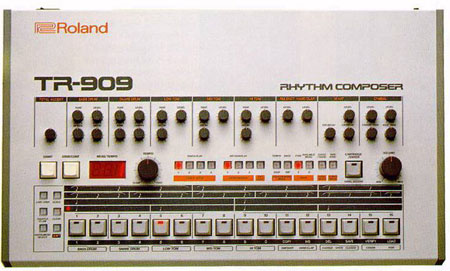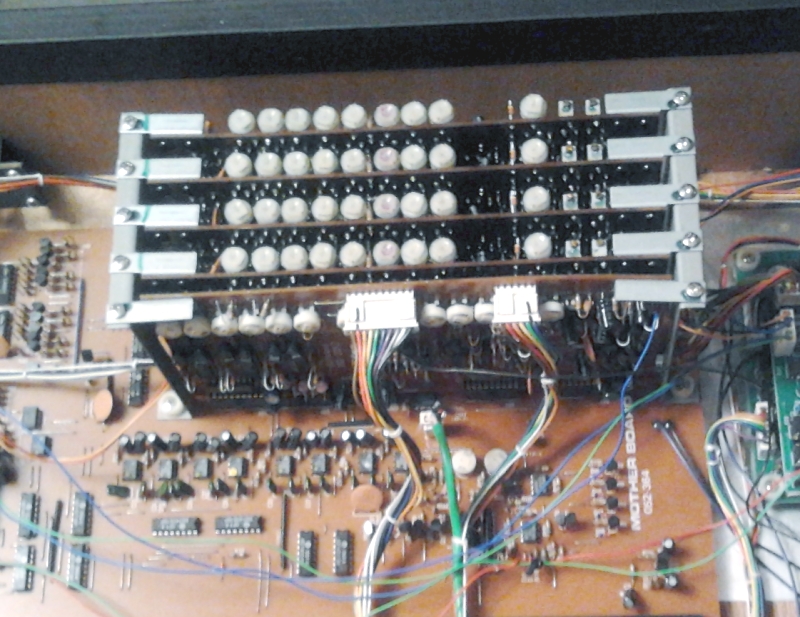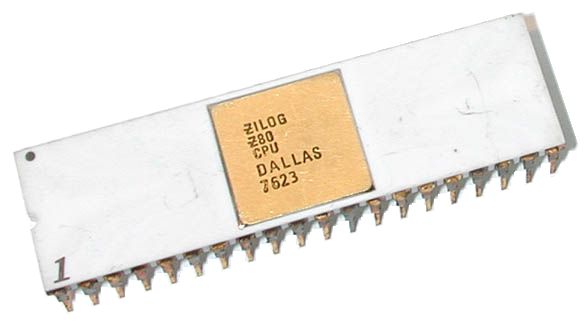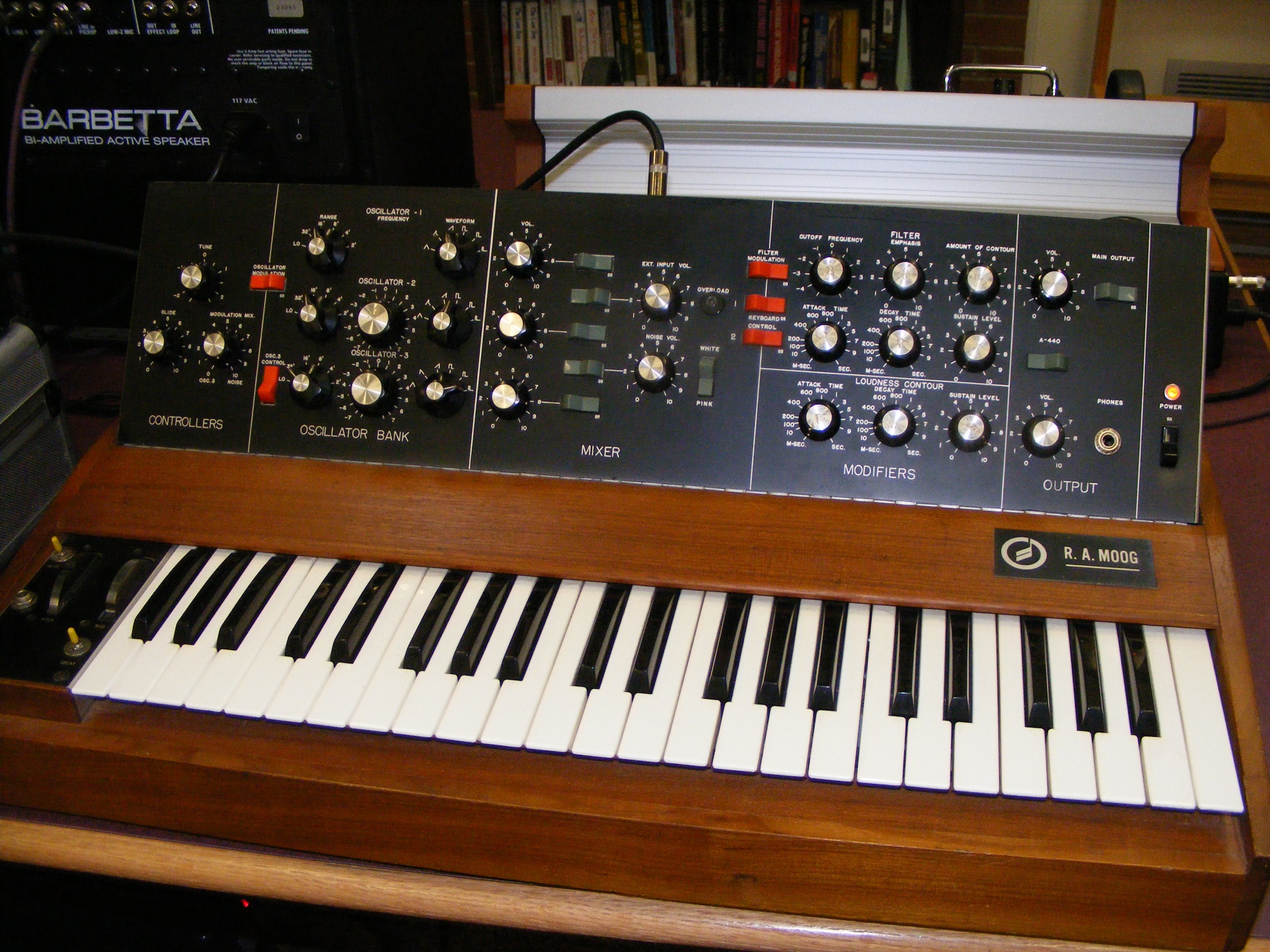|
Roland Jupiter 8
The Jupiter-8, or JP-8, is an eight-voice polyphonic analog subtractive synthesizer introduced by Roland Corporation in early 1981. The Jupiter-8 was Roland's flagship synthesizer for the first half of the 1980s. Approximately 3,300 units have been produced. Although it lacked the soon-to-be standard of MIDI control, later production series of the Jupiter-8 did include Roland's proprietary DCB interface. The instrument had many advanced features for its time, including the ability to split the keyboard into two zones, with separate patches active on each zone. Two years after the release of the Jupiter-8, Roland released the more affordable Jupiter-6 synthesizer with built-in MIDI control but an otherwise slightly reduced set of features. In 2011, three decades after the release of the original Jupiter series, Roland released the fully digital Jupiter-80 and Jupiter-50 synthesizers as successors to the 1980s originals. They were in turn succeeded by the Jupiter-X and Jupi ... [...More Info...] [...Related Items...] OR: [Wikipedia] [Google] [Baidu] |
Roland Corporation
is a Japanese multinational manufacturer of electronic musical instruments, electronic equipment, and software. It was founded by Ikutaro Kakehashi in Osaka on 18 April 1972. In 2005, its headquarters relocated to Hamamatsu in Shizuoka Prefecture. It has factories in Malaysia, Taiwan, Japan, and the United States. As of December 2022, it employed 2,783 people. In 2014, it was subject to a management buyout by its CEO, Junichi Miki, supported by Taiyo Pacific Partners. Roland has manufactured numerous instruments that have had lasting impacts on music, such as the Juno-106 synthesizer, TB-303 bass synthesizer, and TR-808 and TR-909 drum machines. It was also instrumental in the development of MIDI, a standardized means of synchronizing electronic instruments manufactured by different companies. In 2016, ''Fact'' wrote that Roland had arguably had more influence on electronic music than any other company. History Background Roland founder Ikutaro Kakehashi had founded ... [...More Info...] [...Related Items...] OR: [Wikipedia] [Google] [Baidu] |
Voltage-controlled Oscillator
A voltage-controlled oscillator (VCO) is an electronic oscillator whose oscillation frequency is controlled by a voltage input. The applied input voltage determines the instantaneous oscillation frequency. Consequently, a VCO can be used for frequency modulation (FM) or phase modulation (PM) by applying a modulation, modulating signal to the control input. A VCO is also an integral part of a phase-locked loop. VCOs are used in synthesizers to generate a waveform whose Pitch (music), pitch can be adjusted by a voltage determined by a musical keyboard or other input. A voltage-to-frequency converter (VFC) is a special type of VCO designed to be very linear in frequency control over a wide range of input control voltages. Types VCOs can be generally categorized into two groups based on the type of waveform produced. * ''Linear'' or ''harmonic oscillators'' generate a sinusoidal waveform. Harmonic oscillators in electronics usually consist of a resonator with an amplifier that re ... [...More Info...] [...Related Items...] OR: [Wikipedia] [Google] [Baidu] |
Roland Juno-60
The Roland Juno-60 is an analog synthesizer manufactured by the Roland Corporation between 1982 and 1984. It followed the Juno-6, an almost identical synthesizer released months earlier. The Juno synthesizers introduced Roland's digitally controlled oscillators, allowing for greatly improved tuning stability over its competitors. The Juno-6 and Juno-60 were introduced as low-cost alternatives to polyphonic synths such as the Sequential Circuits Prophet-5 and Roland's own Jupiter-8. Its built-in chorus effect was designed to make up for the weaker sound of its single oscillator, and it went on to become its signature effect. The Juno-60 had an immediate impact in 1980s pop music, being used on hits such as " Take On Me" by a-ha, " A Different Corner" by George Michael, and " Time After Time" by Cyndi Lauper. The Juno-60 continued to be popular in the 1990s, being used by house and techno artists. It experienced a resurgence in the 2000s and beyond, gaining popularity amongst mod ... [...More Info...] [...Related Items...] OR: [Wikipedia] [Google] [Baidu] |
Roland Juno-6
The Roland Juno-60 is an analog synthesizer manufactured by the Roland Corporation between 1982 and 1984. It followed the Juno-6, an almost identical synthesizer released months earlier. The Juno synthesizers introduced Roland's digitally controlled oscillators, allowing for greatly improved tuning stability over its competitors. The Juno-6 and Juno-60 were introduced as low-cost alternatives to polyphonic synths such as the Sequential Circuits Prophet-5 and Roland's own Jupiter-8. Its built-in chorus effect was designed to make up for the weaker sound of its single oscillator, and it went on to become its signature effect. The Juno-60 had an immediate impact in 1980s pop music, being used on hits such as "Take On Me" by a-ha, " A Different Corner" by George Michael, and " Time After Time" by Cyndi Lauper. The Juno-60 continued to be popular in the 1990s, being used by house and techno artists. It experienced a resurgence in the 2000s and beyond, gaining popularity amongst modern ... [...More Info...] [...Related Items...] OR: [Wikipedia] [Google] [Baidu] |
Roland MKS-80
The Roland MKS-80 Super Jupiter is a rack mount sound module version of the Roland Jupiter-6 and the Roland Jupiter-8 synthesizers. It is an 8-voice polyphonic analog synthesizer that was manufactured by Roland between 1984 and 1987. It is the only one of the MKS series of synthesizers to have analogue voltage-controlled oscillators (VCOs) instead of analogue digitally-controlled oscillators (DCOs). The voice architecture is almost identical to the Jupiter-6 synthesizer. The service manual states that "The module board of MKS-80 features the following in addition to that of JP-6, its brother module. 1) HPF. 2) Low boost circuit in the 2nd VCA. 3) DC supply current boost circuit (IC50)." In February 1985, Roland started producing a new revision of MKS-80, known as "Rev 5", with a new generation of both Roland VCO's, VCA's and filter. The Rev 5 filter was also used in JX-8P, JX-10 and MKS-70 synthesizers. Features The voice architecture of the MKS-80 is fully analog with 8 polyp ... [...More Info...] [...Related Items...] OR: [Wikipedia] [Google] [Baidu] |
Roland Jupiter-4
The Roland Jupiter-4 (JP-4) was an analog synthesizer manufactured by the Roland Corporation between 1978 and 1981. It was notable as the company's first self-contained polyphony (instrument), polyphonic synthesizer, and for employing digital electronics, digital control of analog circuits (termed ''compuphonic'' by Roland), allowing for such features as programmable memory, voice assignment modes, an Arpeggio, arpeggiator, polyphonic portamento and others. Priced at US$2,895, it was dramatically cheaper than other polyphonic machines from its competitors (such as the Yamaha CS-80, Korg PS-3300 Prophet-5 and OB-X). While it didn't sell as many units compared to the competition, its primary design was such that it could be an accompaniment to organs, complete with an option for a music sheet stand to be fitted. Its future successor in 1981, the Roland Jupiter-8, Jupiter-8, would go on to sell many more units and make Jupiter a recognized brand. Architecture The Jupiter-4's b ... [...More Info...] [...Related Items...] OR: [Wikipedia] [Google] [Baidu] |
Zilog
Zilog, Inc. is an American manufacturer of microprocessors, microcontrollers, and application-specific embedded System on a chip, system-on-chip (SoC) products. The company was founded in 1974 by Federico Faggin and Ralph Ungermann, who were soon joined by Masatoshi Shima. All three had left Intel after working on the Intel 4004, 4004 and Intel 8080, 8080 microprocessors. The company's most famous product is the Zilog Z80, Z80 microprocessor, which played an important role in the evolution of early computing. Backward compatible, Software-compatible with the Intel 8080, it offered a compelling alternative due to its lower cost and increased performance, propelling it to widespread adoption in video game systems and home computers during the late 1970s and early 1980s. The name, pronounced with a long "i" (), is an acronym of ''Z integrated logic'', also thought of as "Z for the last word of Integrated Logic". History Zilog was started in California in 1974 by Federico Faggin and ... [...More Info...] [...Related Items...] OR: [Wikipedia] [Google] [Baidu] |
Arpeggiator
A synthesizer (also synthesiser or synth) is an electronic musical instrument that generates audio signals. Synthesizers typically create sounds by generating waveforms through methods including subtractive synthesis, additive synthesis and frequency modulation synthesis. These sounds may be altered by components such as filters, which cut or boost frequencies; envelopes, which control articulation, or how notes begin and end; and low-frequency oscillators, which modulate parameters such as pitch, volume, or filter characteristics affecting timbre. Synthesizers are typically played with keyboards or controlled by sequencers, software or other instruments, and may be synchronized to other equipment via MIDI. Synthesizer-like instruments emerged in the United States in the mid-20th century with instruments such as the RCA Mark II, which was controlled with punch cards and used hundreds of vacuum tubes. The Moog synthesizer, developed by Robert Moog and first sold in 1 ... [...More Info...] [...Related Items...] OR: [Wikipedia] [Google] [Baidu] |
Portamento
In music, portamento (: ''portamenti''; from old , meaning 'carriage' or 'carrying'), also known by its French name glissade, is a pitch sliding from one Musical note, note to another. The term originated from the Italian language, Italian expression ('carriage of the voice'), denoting from the beginning of the 17th century its use in vocal performances and emulation by members of the violin family and certain wind instruments, and is sometimes used interchangeably with Nonchord tone#Anticipation, anticipation. It is also applied to one type of glissando on, e.g., slide trombones, as well as to the "glide" function of Pedal steel guitar, steel guitars and synthesizers. Vocal portamento In the first example, Rodolfo's first aria in ''La sonnambula'' (1831), the portamento is indicated by the Slur (music), slur between the third and fourth notes. The second example, Judit's first line in ''Bluebeard's Castle'' (1912) by composer Béla Bartók, employs an inclining, wavy line b ... [...More Info...] [...Related Items...] OR: [Wikipedia] [Google] [Baidu] |
Low Frequency Oscillation
Low-frequency oscillation (LFO) is an electronic frequency that is usually below 20 Hz and creates a rhythmic pulse or sweep. This is used to modulate musical equipment such as synthesizers to create audio effects such as vibrato, tremolo and phasing. History Low-frequency oscillation was introduced with modular synthesizers of the 1960s, such as the Moog synthesizer. Often the LFO effect was accidental, as there were myriad configurations that could be "patched" by the synth operator. LFOs have since appeared in some form on almost every synthesizer. More recently other electronic musical instruments, such as samplers and software synthesizers, have included LFOs to increase their sound alteration capabilities. Overview The primary oscillator circuits of a synthesizer are used to create the audio signals. An LFO is a secondary oscillator that operates at a significantly lower frequency than other oscillators, typically below 20 Hz — that is, below the range of ... [...More Info...] [...Related Items...] OR: [Wikipedia] [Google] [Baidu] |
Octave
In music, an octave (: eighth) or perfect octave (sometimes called the diapason) is an interval between two notes, one having twice the frequency of vibration of the other. The octave relationship is a natural phenomenon that has been referred to as the "basic miracle of music", the use of which is "common in most musical systems". The interval between the first and second harmonics of the harmonic series is an octave. In Western music notation, notes separated by an octave (or multiple octaves) have the same name and are of the same pitch class. To emphasize that it is one of the perfect intervals (including unison, perfect fourth, and perfect fifth), the octave is designated P8. Other interval qualities are also possible, though rare. The octave above or below an indicated note is sometimes abbreviated ''8a'' or ''8va'' (), ''8va bassa'' (, sometimes also ''8vb''), or simply ''8'' for the octave in the direction indicated by placing this mark above or below the staff. ... [...More Info...] [...Related Items...] OR: [Wikipedia] [Google] [Baidu] |
Decibel
The decibel (symbol: dB) is a relative unit of measurement equal to one tenth of a bel (B). It expresses the ratio of two values of a Power, root-power, and field quantities, power or root-power quantity on a logarithmic scale. Two signals whose level (logarithmic quantity), levels differ by one decibel have a power ratio of 101/10 (approximately ) or root-power ratio of 101/20 (approximately ). The strict original usage above only expresses a relative change. However, the word decibel has since also been used for expressing an Absolute scale, absolute value that is relative to some fixed reference value, in which case the dB symbol is often suffixed with letter codes that indicate the reference value. For example, for the reference value of 1 volt, a common suffix is "#Voltage, V" (e.g., "20 dBV"). As it originated from a need to express power ratios, two principal types of scaling of the decibel are used to provide consistency depending on whether the scaling refer ... [...More Info...] [...Related Items...] OR: [Wikipedia] [Google] [Baidu] |






